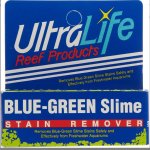- Joined
- Dec 13, 2006
- Messages
- 6,618
- Reaction score
- 102
- Points
- 63
- Location
- Wappingers Falls, NY
- Country
- United States
This stuff has infested three of my tanks. Does anyone know if this stuff will hurt the newts? I"m thinking of taking the newts out anyway while I treat the tank. It's either that or throw out all the plants in the tanks and start over.
(Ultra life blue green slime stain remover)
https://www.chewy.com/ultralife-blu...Uvmgn0Lkj_I8JhL6XbgoZqTQEaeENmjhoCLSkQAvD_BwE
(Ultra life blue green slime stain remover)
https://www.chewy.com/ultralife-blu...Uvmgn0Lkj_I8JhL6XbgoZqTQEaeENmjhoCLSkQAvD_BwE

